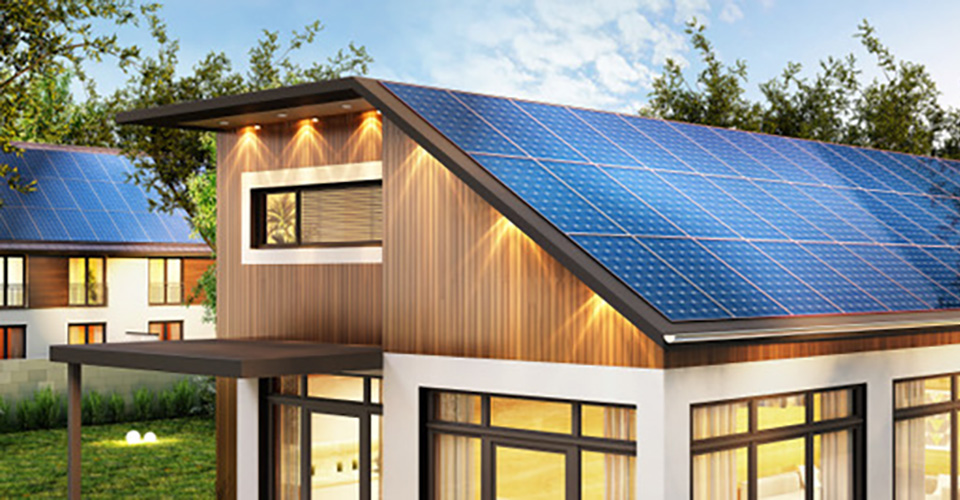Build it Green, Maximize Your Investment
Remodels which employ green materials, and construction practices can deliver tangible benefits to homeowners. They enhance your family’s enjoyment of your home, provide an opportunity to choose features and amenities which add value when you sell, and allow you to make upgrades which save energy and reduce your utility bills.
The green building movement has caught on due to the many benefits possible from the use of environmentally friendly materials and design features. Homebuilder and real estate industry data show that 40% of single-family homes are now built green and 84% percent of all residential construction has sustainable features.
Here are some thoughts to keep in mind as you consider the advantages of including energy conservation and sustainability in your remodeling plans:
Keep Your Eyes on the Prize
As the prevalence of green construction grows, the overall capital outlay continues to drop. The costs to build green are generally comparable to that of traditional home construction and more contractors than ever specialize in LEED (Leadership in Energy and EnvironmentalDesign), National Green Building Program, and Green Builder Coalition certification. Studies have also found that any features or materials which are pricier are typically recouped in energy savings within a reasonable period of time. Taking these steps will reduce energy consumption by 30% to 60%, rewarding you with substantial monthly and annual savings on your utilities. Take the time to check to see if using green-rated windows, doors, roofing, insulation and HVAC may be eligible for tax credits from federal or state programs or local utility providers.
During the planning stages of your remodel, ask your contractor which green options they offer and specifics about the immediate and long-term benefits you can expect. Keeping the focus on these explicit advantages will establish a yardstick to measure the payoff. In general, going green provides energy savings, reduces water usage, improves indoor air quality, and delivers a longer useful life of the roof, flooring, and structural components due to the greater durability of green materials.
Determine How Sustainable Your Home is Already
Depending on the year of its construction, your home may have more sustainable characteristics than you imagined. To put it to the test, consider having a professional energy assessment performed. This on-site audit identifies energy inefficiencies in your home and provides solutions to correct these problems. A certified technician conducts a room-by-room examination of the residence, and performs a blower door test and a thermographic scan to find air leaks and heat and cooling loss. The process concludes with a thorough review of your past utilities statements and an analysis of the data collected using specialized software.
You can find companies which specialize in offering this service by visiting Residential Energy Services Network or by referral from state, county or city government. Many contractors are also certified to perform home energy audits. The cost averages from $300 to $500 but your utility may reimburse part or all of this expense or even perform the audit as a free service. Both SoCalGas and Southern California Edison have online websites which provide advice and resources: SoCalGas Save Money & Energy and Southern California Edison Home Efficiency Guide.
Create a Checklist of Options to Review
Before moving ahead with a budget and final remodel plan, draw up a detailed list of options to choose from to achieve your desired level of sustainability.
Site Design: Working with your contractor, review anything your remodel can accomplish through optimal site design to maximize the sustainability potential of your home. This would be based on year-round climate conditions, orientation to the sun, elevation, and landscaping features which may provide shade, shelter from wind, etc. Installation of solar panels or solar roof tiles will pay dividends in electricity savings, particularly if you have a heated pool.
Architecture: The plans you ultimately choose should go beyond your family’s practical living space needs and extend into considerations such as air flow, insulation, humidity/moisture control, acoustics, and ventilation and other factors to reduce energy use and ensure the highest possible indoor environmental quality (IEQ). The overriding goal should be to maximize fresh air exposure while reducing indoor pollutants. Working closely with your contractor, ensure that smart, green choices are “baked in” to your plans. These should include Energy Star and NFRC (National Fenestration Rating Council)-rated doors and windows, on-demand water heaters, high-efficiency insulation, LED lighting, solar technology, energy-efficient appliances, and optionally, reclaimed lumber and fixtures, rainwater collection as part of the plumbing system
Materials and Construction: Your choice of materials and building techniques, both interior and exterior, are an integral part of your green remodel. Today’s construction industry pays substantial attention to the creation of the optimal “thermal enclosure” for structures. This involves how factors such as insulation, exterior wall finishes, sheathing, drywall and other structural components manage heat gain and loss from air leaks.
Many green and sustainable materials are more durable and have higher performance ratings than traditional options. They also offer the added benefit of protecting your family from exposure to toxic substances which can pollute your indoor environment. Paints, glues, carpeting, and flooring often contain chemicals which have been proven responsible for eye, nose and throat irritation, headaches, organ and central nervous system damage, and even cancer. Much of this is due to the presence of volatile organic compounds (VOCs) which create off-gassing.
The U.S. Environmental Protection Agency (EPA) says that indoor air is two to ten times more polluted that outdoor air. You can largely avoid this serious health risk by choosing wisely. Whenever possible, look for opportunities to reuse materials such as reclaimed fixtures and refurbish during your remodel when re-building isn’t desirable or necessary.
For more ideas, visit the Energy-Efficient Home Design website of the U.S. Department of Energy. By exploiting today’s wide spectrum of green remodeling options, you’ll succeed in making your home a healthier place to raise your family and more sustainable part of your community.

